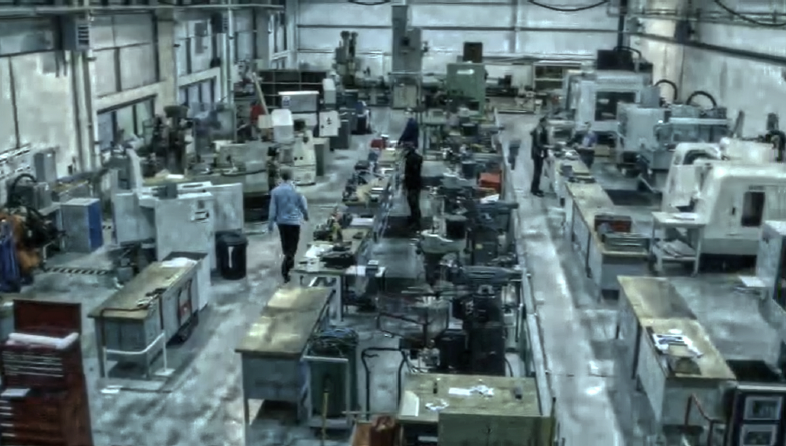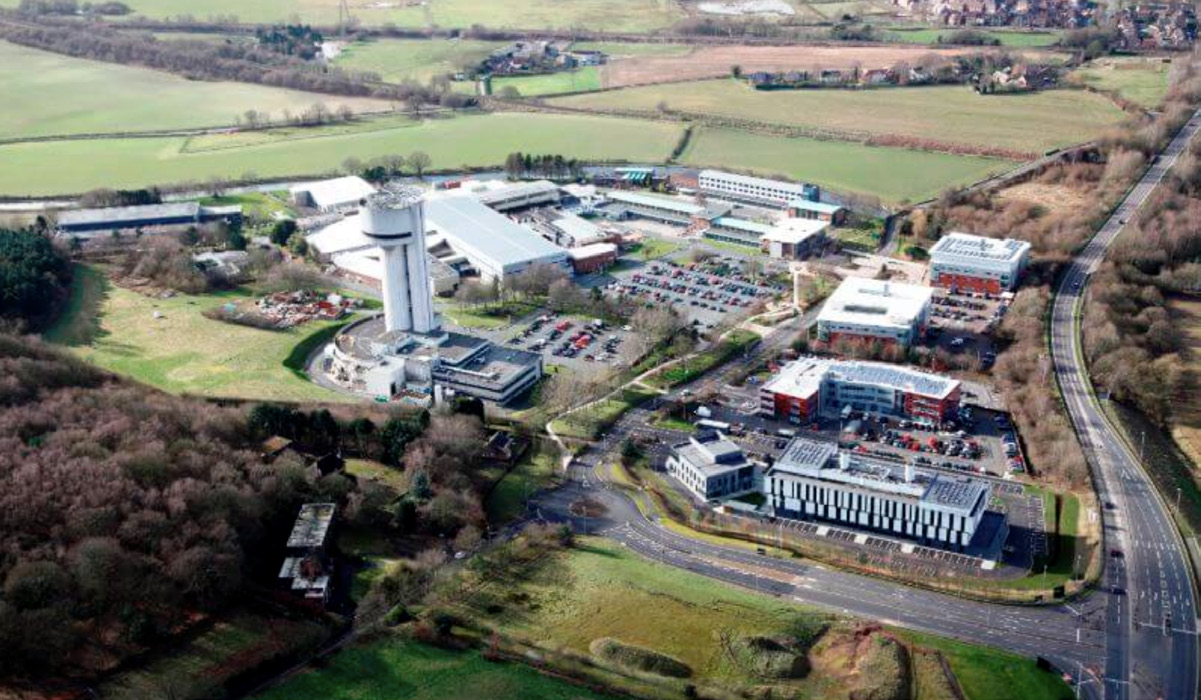Piers Olsen, Chief Executive Officer, Olsen Actuators and Drives
Government and defence satellite projects have a reputation for lengthy and complex procurement processes, notoriously long lead times and wallet-busting budgets. The need for high reliability in space systems has also led to a highly risk averse culture where provenance is paramount to avoid any failure.

However, this mindset is evolving as developments in satellite technology from the New Space community prove that satellite development projects needn’t be so long and drawn out.
Satellites are the lynchpin of communications for the military and deliver the secure and remote connectivity that is so critical to military operations, but the military is not making strides forward in satellite technology. Instead, that is coming from the private sector where New Space is quickly emerging.
It represents the re-birth of the industry, where an array of entrepreneurs, some from familiar tech giants with billions to bankroll their projects, and some from small start-ups that want to give new concepts a try.
Over the last decade space has come alive again and this has also led governments to be forward thinking in terms of how this New Space phenomenon could potentially feed into defence projects.
The use of software defined payloads is enabling operators to configure their satellites on-orbit, to change their profiles so that they can serve different applications across different regions with steerable beams.
This new age of space has brought with it an acceleration of projects. These companies don’t want to hang around. They need to prove their concept and make money, and as a result, the time taken from the drawing board to launch has been cut considerably. This sector has an agility that government programs have never had.
Geopolitics
The complexity of the geopolitical environment has taken a huge turn in recent years, Instability is the common denominator in regions across the globe with conflict continuing in Ukraine, the Middle East, tensions between the U.S. and China and the rise of nationalism and protectionism increasing.
Space is playing a more central role in defence than it ever had previously. Satellites gather information, they allow secure communications in the most hostile of environments, they are highly flexible and difficult to disable, and they are recognized as a priority in defence systems.
However, to benefit from advancements in satellite technology, governments must learn to be more agile and to take a leaf out of the New Space book, by pushing innovation, differentiating their space-based systems, lowering costs and reducing inefficiencies.
Taking risk
in their stride
In the past, the space sector itself has been notoriously risk-averse, to the point of slowing itself down. Lead times on satellite manufacturing were years long. Budgets were pushed to the limit and the technology that eventually made its way to orbit was often outdated quickly, necessitating a new project and the cycle starting all over again.
Look at the satellite industry today. Spacecraft development is speeding up, especially in Low Earth Orbit (LEO), where New Space companies are turning projects around at record speed.

However, this once again highlights a shift in mindset. Where space players were once reluctant to use COTS components and brought development in-house to avoid risk, today NewSpace players are focused on managing risk and are turning to COTS to ensure cost-effective and fast realization of their projects.
This is game changing technology, enabling an industry that previously had to literally design a new satellite to fulfill a certain job description to operating a flexible payload that can remain relevant for its entire lifespan.
Space players were once dependent on a small handful of launch operators to get them where they needed to go.
However, today we see the emergence of highly successful players such as SpaceX and RocketLab and many more that are in development that promise less expensive, rapid access to space and rideshares that spread the launch cost.
This means that spacecraft manufacturers can trial technology much more easily and be assured of their ride into orbit. The net result is more of an appetite to try new things — and take more calculated risks. New attitude toward design
The need for new technology in the field is urgent, and to ensure that this happens there needs to be a re-focus of the defence sector to concentrate on speed, not complexity.
The defence industry has deeply ingrained ways of working and that is not going to be easy to change, but the ability to use a more agile design process will result in new technology reaching the field faster.
This can be achieved by adopting a process of iterative design, rather than the traditional waterfall process that relies upon sequential steps.

Olsen Actuators manufacturing facilities.
An iterative design process is the process of continuously improving a concept, design or product. The creation of a prototype enables teams to conduct constant tweaking of the product through repeated adjustment cycles. There is an element of improvement gained through every cycle, taking the design team closer to the end goal at every step.
In the iterative design process, failing is an important part of the process. We’ve all borne witness to the failures of SpaceX rockets, for example. The team can brush failure off and simply carry on. It is an acknowledged part of the process. This cycle is much faster than the waterfall model and promotes efficiency, timeliness, cost-effectiveness and makes it easier to manage risk.
A new approach
to components
Military satellite projects rely heavily upon a reliable component supply chain and have previously used a lot of bespoke components within their projects. Components require large non-recurring costs to produce with expenses, such as R&D and testing, and this can limit the potential suppliers that can compete to produce them and can create a lack of competition.
Commercial-off-the-shelf (COTS) components are at the very foundation of New Space manufacturing. Companies are striving to keep costs down while offering a high level of performance and using components that can withstand the rigors of the space environment. It’s a true balancing act.
By building a robust portfolio of high quality, space-rated off-the-shelf components, they are enabling agility and flexibility. Critically, they are adopting an assembly-line mentality, where the components they are using in their designs are tightly matched with the manufacturing process.
If this approach can be adopted by defence organizations, it would streamline the process and access to components will become much faster, simpler and cost-effective.
Already, component manufacturers have designed and tested their products specifically for the space environment.
They have already made the investment in the R&D, the integration, the clean room and the project management.
They have the engineering staff available.
They offer quality in production and economies of scale, and many are already flight proven. The products undergo intensive testing for shock, vibration, cooling and radiation and other environmental testing. This may result in a more expensive cost per unit, but the hard work is taken out of it.
If a more tailored approach is needed, customized components can be offered, and these fall somewhere in between COTS and in-house developed products. They are essentially COTS, but they are adapted for specific use cases.

Olsen Actuators & Drives are situated on
the prestigious Sci-Tech campus at
Daresbury with access to world-class
facilities
Here, manufacturers work with the client to understand their requirements and then make changes to the original commercial component. This means that the customer avoids lengthy in-house development, design resources and project management plus associated validation testing risks.
Buying in components, such as motors, drives, encoders, actuators and roller screws, also means that the client can focus resources on systems engineering and application design solutions.
A reputable component manufacturer will be able to provide traceability of all their products, which is often a critical consideration for government satellite projects. Assurances can be put into place that ensure that the COTS components selected can run the course of a mission, can cope with the space environment, and can meet size and weight requirements.
Adopting New
Space thinking
The way we think about satellite manufacturing is changing and it’s time for governments and defence organisations to transform their way of thinking about how their programs should be delivered.
A new level of collaboration is required between component manufacturers and government entities, so that a new level of engagement can be fostered to support a new design process. This way, we can define a new era of military satellite manufacturing.
 If we can heighten awareness of the streamlining that can take place and work closely with defence organizations to understand their requirements, we can ensure that our components meet and exceed expectations.
If we can heighten awareness of the streamlining that can take place and work closely with defence organizations to understand their requirements, we can ensure that our components meet and exceed expectations.
COTS does not mean cutting corners. It simply means that components are available as and when they’re needed, customized or not, and that satellite projects can come to fruition, and do the job in the field that they are required to do today, rather than suffer delays and the danger of becoming obsolete.
A nimble mindset will help to vastly reduce lead times and deploy new technology quickly, where it is so critical to mission success.
www.olsenactuators.com


